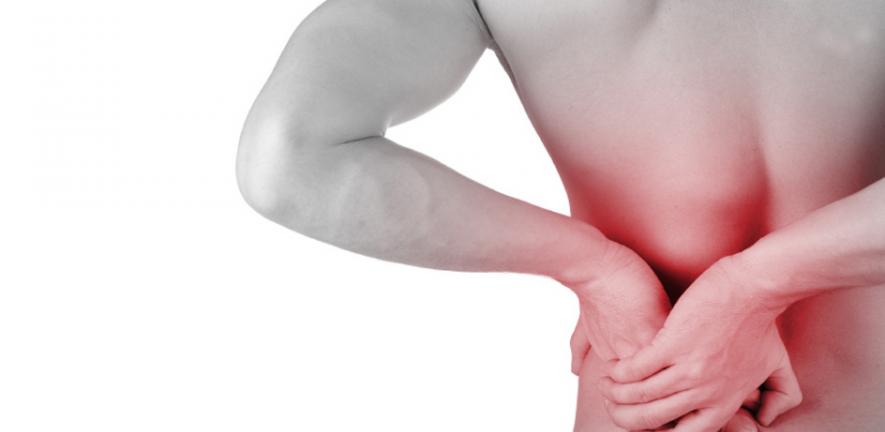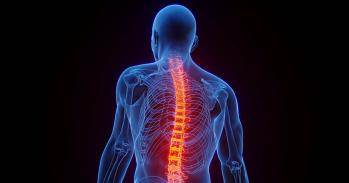
Research by a Cambridge archaeologist shows that back pain caused untold misery long before we started staring into screens and slumping on sofas.
Research by a Cambridge archaeologist shows that back pain caused untold misery long before we started staring into screens and slumping on sofas.
It's likely that communities differed in their responses to disabilities so we can't say for certain that the SH1 individual was cared for by the group or that this was typical.
Dr Asier Gomez-Olivencia
The high incidence of back pain apparent today is often blamed on our lazy lifestyles: we sit at computers, watch television, travel by car and eat too much. But debilitating back ache is nothing new: it dates back millions of years to an era long before screens and sofas, according to a Cambridge University researcher who is looking at the fossil record of human bones.
In a talk called "Four Million Years of Back Pain" on 25 February, Dr Asier Gomez-Olivencia will present the latest results of his research on the damaged spine of an early hominin called Homo heidelbergensis. He will set this in the context of the diseases evident in the fossil record of the hominin spine from australopithecines to Neanderthals - a time span stretching from 4.4 million to 30,000 years ago.
Gomez-Olivencia will also discuss the possibility that disabled members of early human communities may have been looked after by the rest of the group for significant periods of time, confounding popular stereotypes of these societies as brutal and uncaring.
Found among the bones of around 28 individuals at a site called Sima de los Huesos (pit of bones) in northern Spain, the almost-complete lumbar spine caused huge excitement when it was carefully reconstructed from fragments discovered during different field seasons by a team of scientists from the Centro Mixto de Evolución Humana in Burgos.
The spine comes from the same individual as a pelvis found back in 1994, two years after the site yielded three complete crania. These finds merited the front cover of the prestigious scientific journal Nature as they pushed back the Neanderthal lineage into the Middle Pleistocene (around 500,000 years ago) and helped to clarify human evolution in that period.
While the tough bone material of human teeth and long bones is more likely to survive, human vertebrae are more fragile and prone to break and finally disappear, making them tantalisingly rare in the fossil record. The lumbar spine found in Sima de los Huesos, known as SH1, is more or less intact.
Examination of the morphology of the pubis symphysis shows that the bones come from a man of around 45 years (distinctly elderly for the time) who lived more than half a million years ago. The way in which the bones developed (their morphology) and the way they changed due to wear and tear (their pathology) show that this individual is likely to have suffered severe back pain.
Back problems - which today account for almost half of absences from work and exert a heavy toll on the economy - are often considered to be a side effect of an "unnatural" life style. But the SH1 spine adds to other fossil evidence that vertebral pathologies have been present in our history for millions of years. Living very differently to us, our ancestors suffered from back problems comparable to the conditions that cause us so much misery.
Dr Gomez-Olivencia is matching the morphology and pathology of the SH1spine to modern spines showing similar lesions. "It appears that we are looking at the spine of a man who had several different problems, including the inversion of the curvature of the back, spondylolisthesis, and Baastrup disease - which are associated with pain today," he said.
Homo heidelbergensis were nomadic hunter gatherers, relying on animals such as red deer and horses for food, and a damaged spine would have made hunting impossible. The survival of a man with limited mobility suggests that some individuals may have been looked after by others, or have found alternative roles in the community.
"It's likely that communities differed in their responses to disabilities so we can't say for certain that the SH1 individual was cared for by the group or that this was typical - but it's interesting to note that this is not the only individual that suffered pathologies in this site," said Dr Gomez-Olivencia.
Not only are Homo heidelbergensis likely, like us, to have suffered back pain. The results of a study published by Spanish scientists suggest that our female ancestors experienced another health hazard often regarded as relatively modern - difficult and painful births.
When the human pelvis adapted to an upright position, its modified configuration "competed" with the need to give birth to infants with large heads. A comparison of the shape of the SH1 pelvis with human fossil pelvises known to be female from around the world reveals that the difference between sexes of the fossil specimens parallels those of modern males and females. This discovery suggests that our female ancestors had tricky and life-threatening deliveries.
This work is licensed under a Creative Commons Licence. If you use this content on your site please link back to this page.





